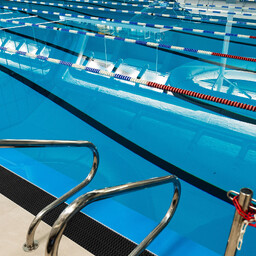Alates 1. jaanuarist 2026 peavad kõik
veekeskused ja ujulad
tagama
vetelpääste võimekus
e. See kehtib ka
koolide ja lasteaedade basseinid
ele. See võib tuua lisakulusid kohalikele omavalitsustele.
veekeskused ja ujulad
Tõlge fraasile: veekeskused ja ujulad
EN
water centers and swimming pools
vetelpääste võimekus
Tõlge fraasile: vetelpääste võimekus
EN
water rescue capability
koolide ja lasteaedade basseinid
Tõlge fraasile: koolide ja lasteaedade basseinid
EN
school and kindergarten pools
Uus määrus jõustub 1. septembril. See kohustab ujulaid ja veekeskusi tagama sukeldumisvõimelise vetelpäästja kohaloleku. Vetelpäästjal ei pea olema
kutsetunnistus
t, kuid ta peab suutma sukelduda basseini sügavaimasse ossa ja sealt inimest välja tuua.
kutsetunnistus
Tõlge fraasile: kutsetunnistus
EN
professional certificate
Iga ujula peab ise otsustama, kuidas
vetelpääste võimekus
t tagada. Sügavamates basseinides võib vaja minna lisavarustust või erikoolitust. Näiteks on Tallinna Kalevi ujula basseinid sügavamad kui Pärnu Raba ujula omad. Seetõttu peab ka vetelpääste olema erinev.
vetelpääste võimekus
Tõlge fraasile: vetelpääste võimekus
EN
water rescue capability
Vetelpääste suurendab külastajate turvalisust. See võimaldab kiiresti abi osutada. 2018. aastal oli
kutsetunnistus
ega vetelpäästja vaid 21,5% ujulatest. 2023. aastal juhtus Eestis 84 veeõnnetust.
kutsetunnistus
Tõlge fraasile: kutsetunnistus
EN
professional certificate
Vetelpäästja aitab vähendada õnnetuste riski. Kuid igaüks peab ise ka
ettevaatlik olema
. Eesti Linnade ja Valdade Liidu tegevdirektor toetab uut nõuet. Ta ütleb, et vetelpäästja kohustused peaksid olema selgemad. Vetelpäästja vastutus on suur, seega peab ta teadma oma ülesandeid hästi.
ettevaatlik olema
Tõlge fraasile: ettevaatlik olema
EN
to be cautious
Uued nõuded mõjutavad ka kohalikke omavalitsusi. Nad peavad hoolitsema ka
koolide ja lasteaedade basseinid
e eest. See võib tuua kaasa lisakulusid.
koolide ja lasteaedade basseinid
Tõlge fraasile: koolide ja lasteaedade basseinid
EN
school and kindergarten pools
Eestis on 205 ujulat omavat asutust. Kokku on 232 ujulat ja 489 basseini. 2023. aastal juhtus Pärnus
traagiline uppumisjuhtum
. Kohus mõistis ettevõtte ja selle töötaja õigeks. Prokurör ja kannatanu vaidlustasid kohtu otsuse. Kohtuasi jätkub nüüd
Tallinna ringkonnakohtus
.
traagiline uppumisjuhtum
Tõlge fraasile: traagiline uppumisjuhtum
EN
tragic drowning incident
Tallinna ringkonnakohtus
Tõlge fraasile: Tallinna ringkonnakohtus
EN
in Tallinn District Court
Starting from January 1, 2026, all water centers and swimming pools must ensure water rescue capability. This also applies to school and kindergarten pools. This may bring additional costs to local governments.
The new regulation comes into force on September 1. It requires swimming pools and water centers to ensure the presence of a dive-capable water rescuer. The water rescuer does not need a professional certificate but must be able to dive to the deepest part of the pool and bring a person out from there.
Each swimming pool must decide for itself how to ensure water rescue capability. In deeper pools, additional equipment or special training may be required. For example, the pools at Tallinn's Kalev swimming pool are deeper than those at Pärnu Raba swimming pool. Therefore, the water rescue must also be different.
Water rescue increases visitor safety. It allows for quick assistance. In 2018, only 21.5% of swimming pools had a certified water rescuer. In 2023, there were 84 water accidents in Estonia.
A water rescuer helps reduce the risk of accidents. However, everyone must also be cautious themselves. The executive director of the Association of Estonian Cities and Municipalities supports the new requirement. He says that the duties of a water rescuer should be clearer. The responsibility of a water rescuer is great, so they must know their tasks well.
The new requirements also affect local governments. They must also take care of school and kindergarten pools. This may result in additional costs.
There are 205 institutions with swimming pools in Estonia. In total, there are 232 swimming pools and 489 pools. In 2023, a tragic drowning incident occurred in Pärnu. The court acquitted the company and its employee. The prosecutor and the victim contested the court's decision. The court case will now continue in Tallinn Circuit Court.

